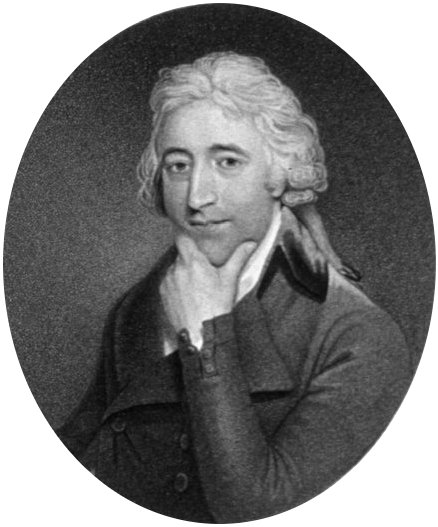Sir James Edward Smith (2 December 1759 – 17 March 1828) was an English botanist and founder of the Linnean Society.
Smith was born in Norwich in 1759, the son of a wealthy wool merchant. He displayed a precocious interest in the natural world. During the early 1780s he enrolled in the medical course at the University of Edinburgh where he studied chemistry under Joseph Black and natural history under John Walker. He then moved to London in 1783 to continue his studies. Smith was a friend of Sir Joseph Banks who was offered the entire collection of books, manuscripts and specimens of the Swedish natural historian and botanist Carolus Linnaeus, following the death of his son Carolus Linnaeus the Younger. Banks declined the purchase but Smith bought the collection for the bargain price of £1,000. The collection arrived in London in 1784 and in 1786 Smith was elected Fellow of the Royal Society.
Between 1786 and 1788 Smith travelled the Grand Tour through the Netherlands, France, Italy and Switzerland visiting botanists, picture galleries and herbaria. He founded the Linnean Society of London in 1788 becoming its first President, a post he held for 40 years until his death. He returned to live in Norwich in 1796 bringing with him the entire Linnean Collection. His library and botanical collections acquired European fame and were visited by numerous entomologists and botanists throughout the Continent. In 1792, he was elected a foreign member of the Royal Swedish Academy of Sciences. in 1814 J.E. Smith was knighted.
Smith spent the remaining thirty years of his life writing books and articles upon botany. His books included Flora Britannica and The English Flora (4 volumes, 1824 – 1828). He contributed 3,348 botanical articles to Rees's Cyclopaedia between 1808 and 1819, following the death of Rev. William Wood, who had started the work. He contributed 7 volumes to the only major botanical publication of the eighteenth century, Flora Graeca, the publications begun by John Sibthorp. A fruitful collaboration was found through descriptions Smith supplied to publisher and illustrator, James Sowerby. Depiction of flora in England had previously only found patronage for aesthetic concerns, but an interest in gardening and natural history saw illustrated publications, such as the exotic A Specimen of the Botany of New Holland and the 36 volume work English Botany, reaching new audiences.[1]
In 1797 Smith published The Natural History of the Rarer Lepidopterous Insects of Georgia, the earliest book on American insects. It included the illustrations and notes of John Abbot, with descriptions of new species by Smith based on Abbot's drawings.[2]
Smith's friendship with William Roscoe saw him contribute 5000 plants between 1806 and 1817 to supplement the Roylean Herbarium. This was to become the Smith Herbarium held by the Liverpool Botanic Garden.[3] After Smith's death the Linnean Collection, together with Smith's own collections, were bought by the Linnean Society for £3,150.
He was married to Pleasance Reeve (1773-1877), daughter of robert Reeve of Lowestoft. She survived her husband by 49, living to the age of 104 years. years and edited his memoirs and correspondence. Lady Smith continued to live at Norwich until 1849 when she moved to Lowestoft where she died in 1877. They are buried together at St Margaret's, Lowestoft.[4] They had no children.
An example of the Smith prints, found here. Joan and Kendall Landis have many of these prints hanging in their house. This plate is from the book, 'Icones pictae plantarum rariorum descriptionibus et observationibus illustratae, Auctore J.E. Smith, M.D. Fasc. 1-3.'' Date=1790-1793, Author=James Edward Smith and James Sowerby.






It should be noted that the Edwards clan descends not from Sir James Edward, who died childless, but from his brother Francis.
ReplyDelete